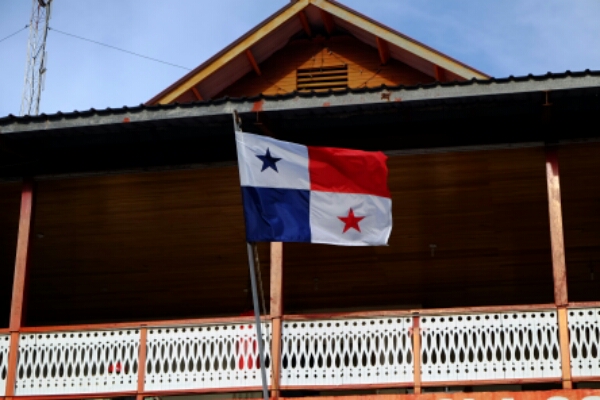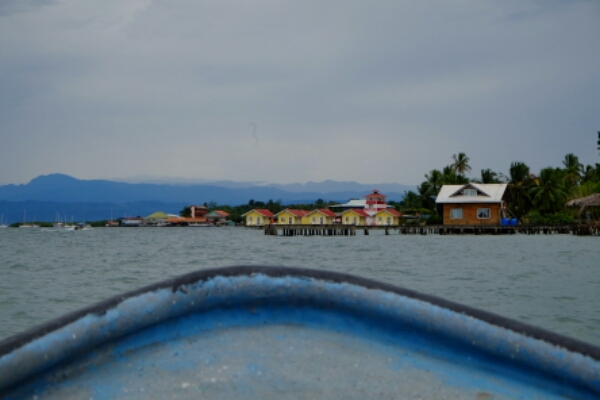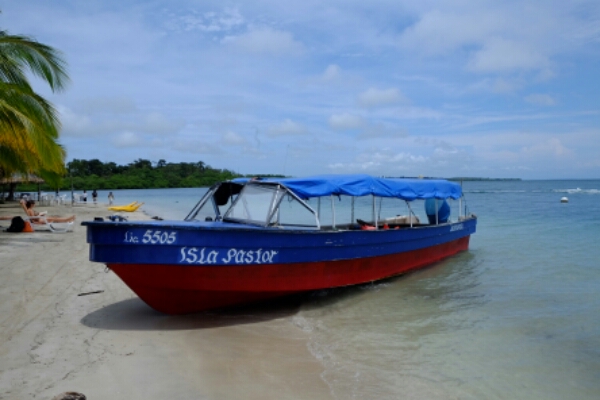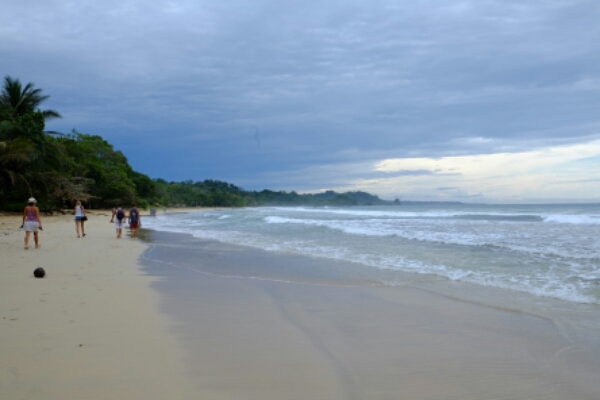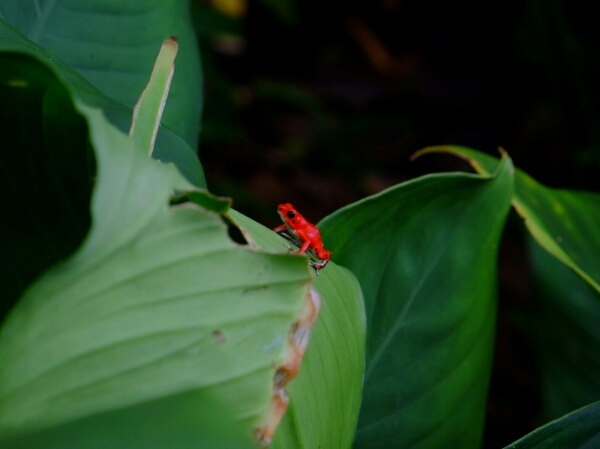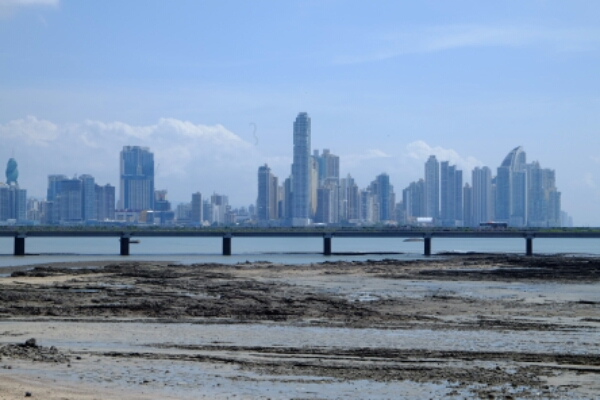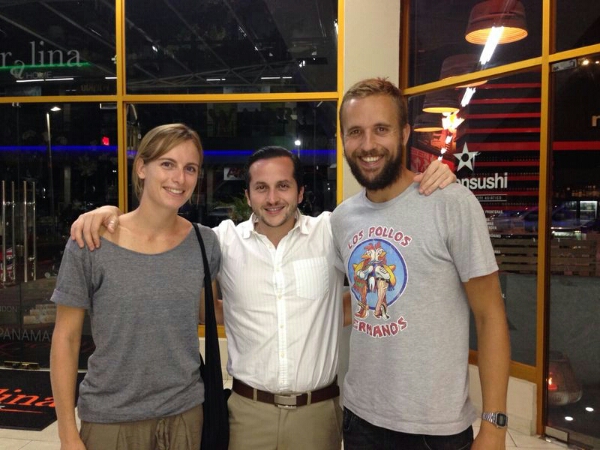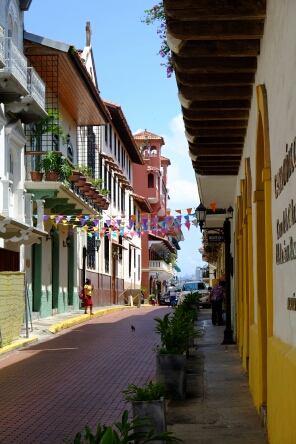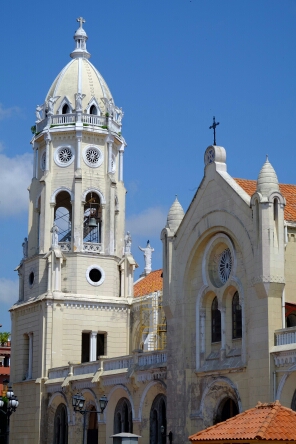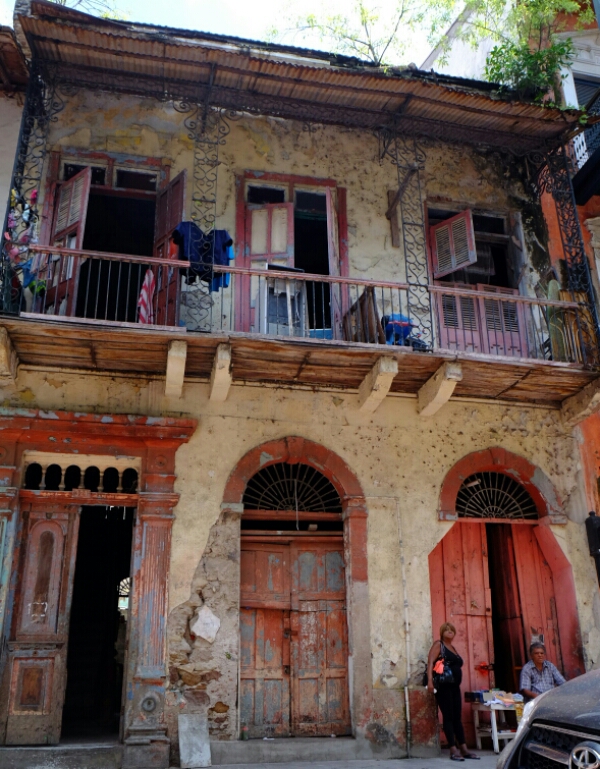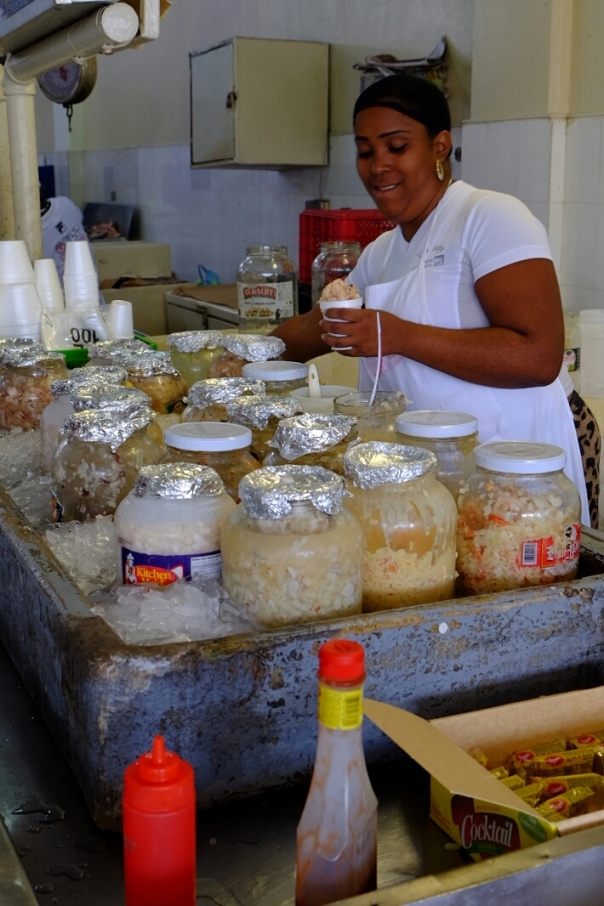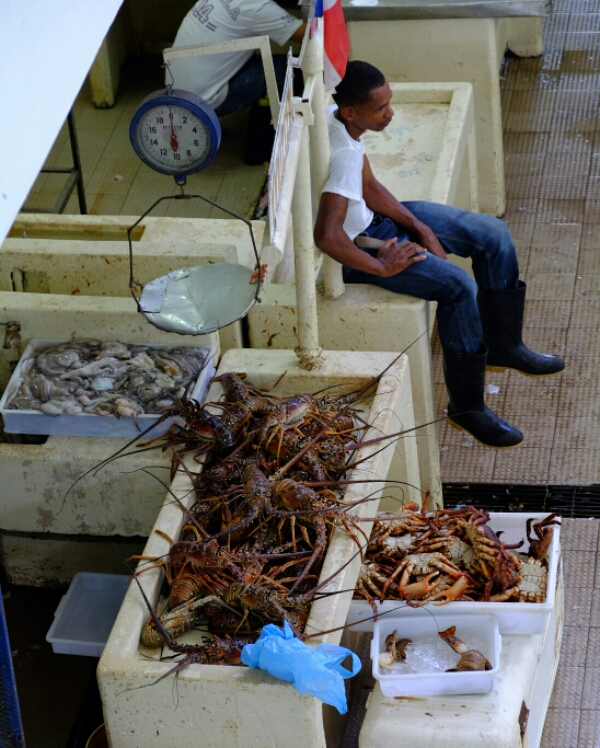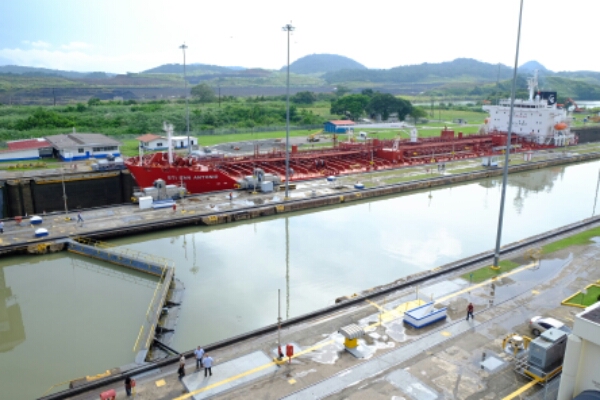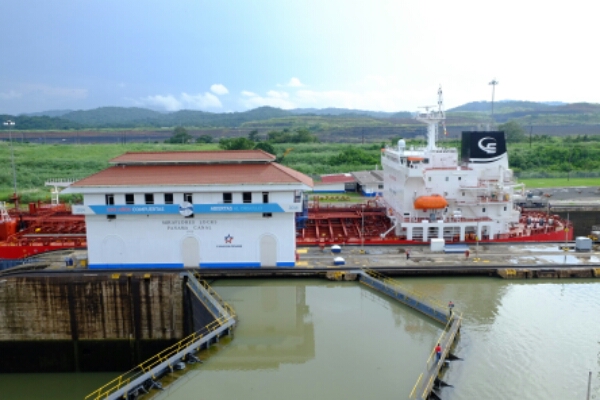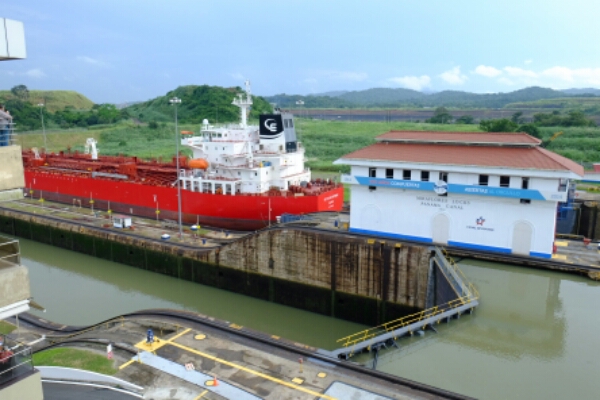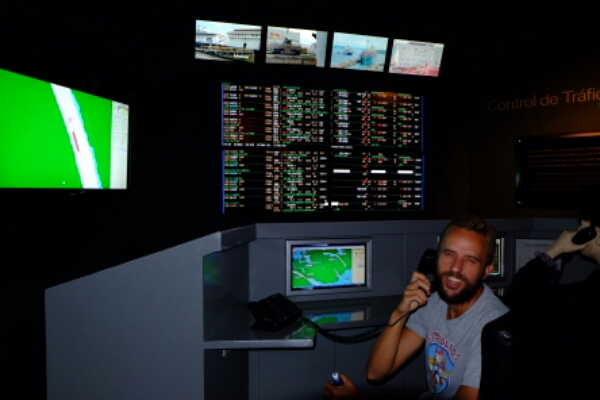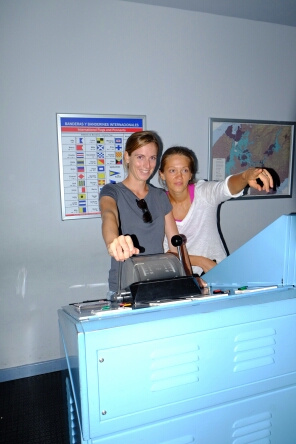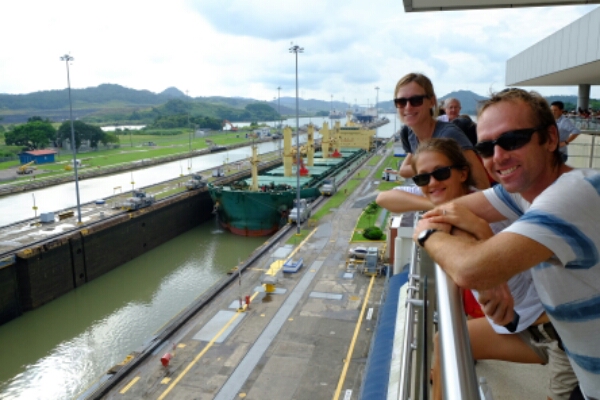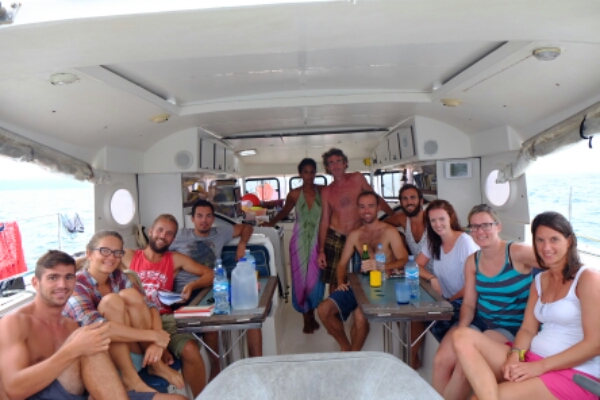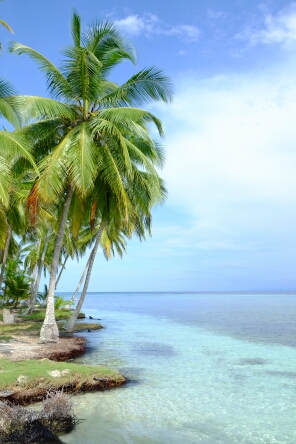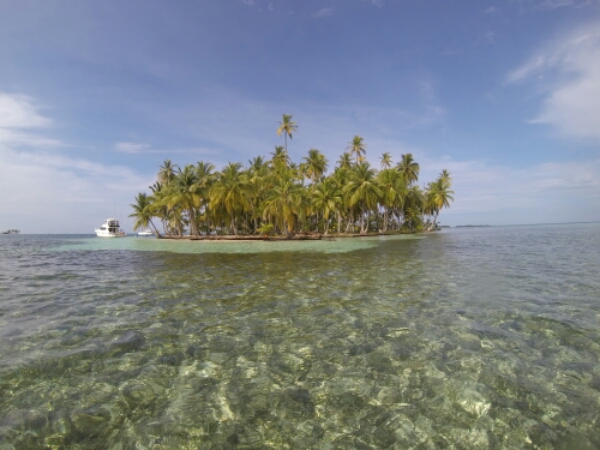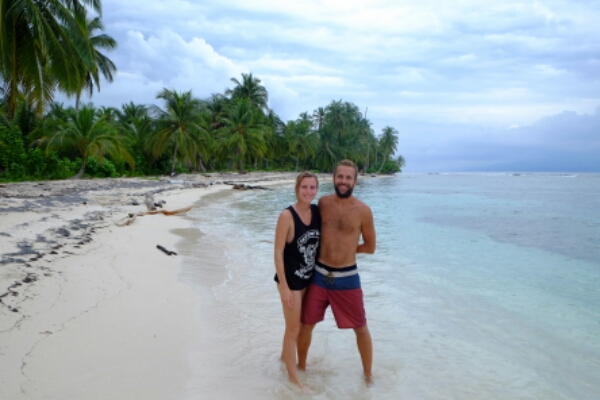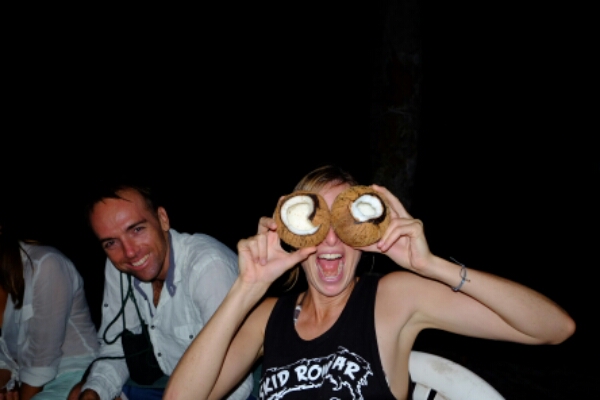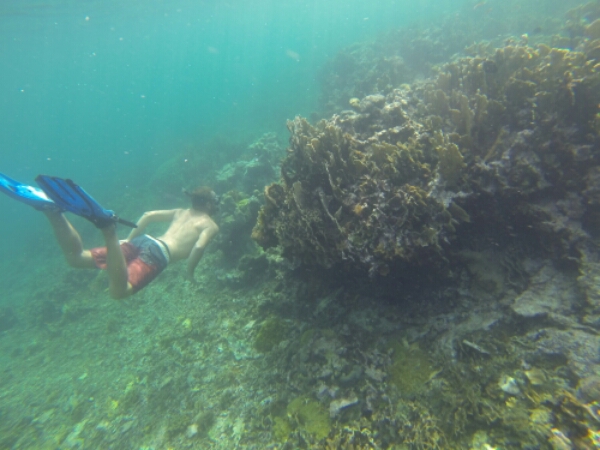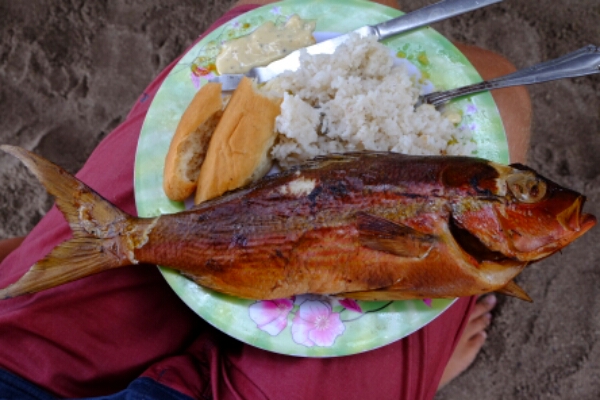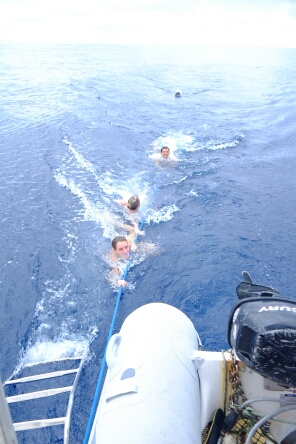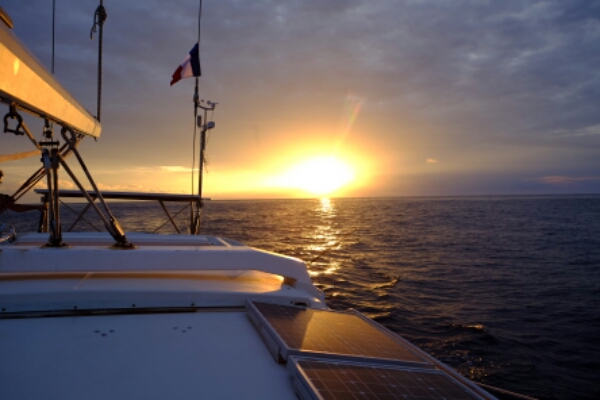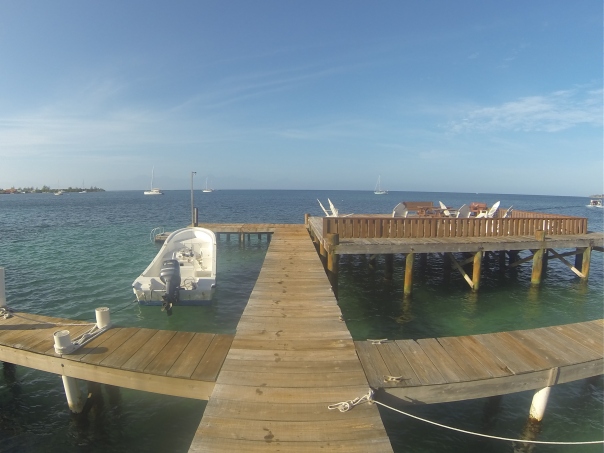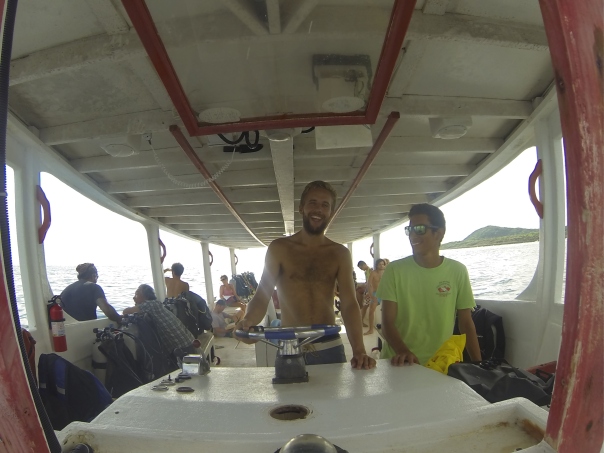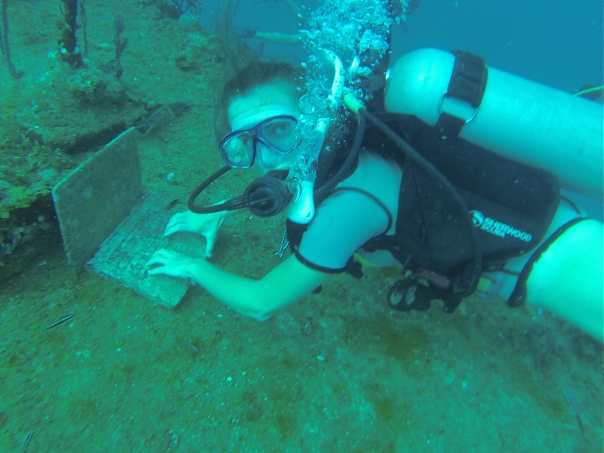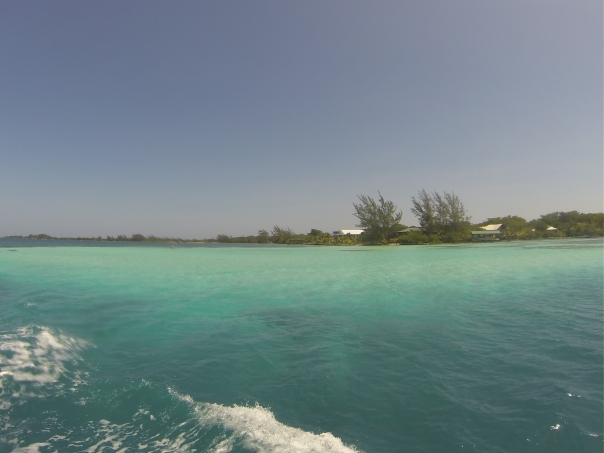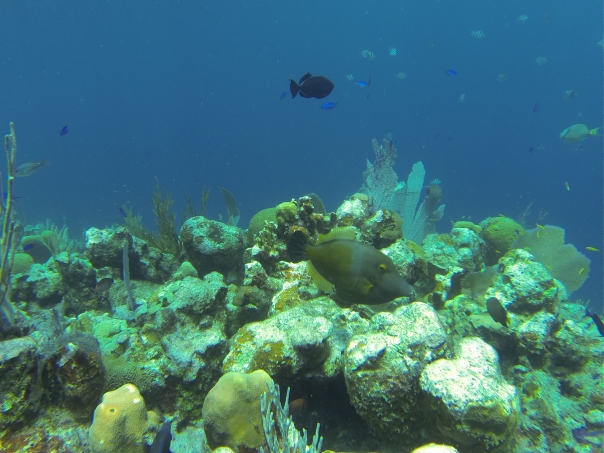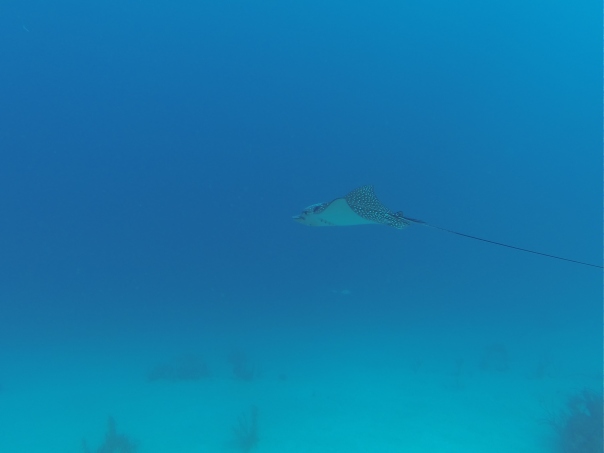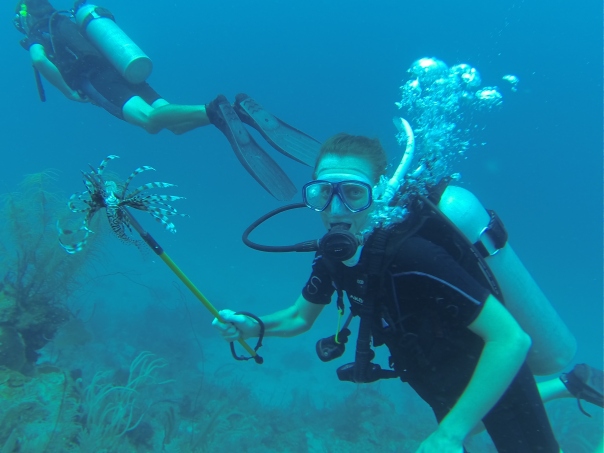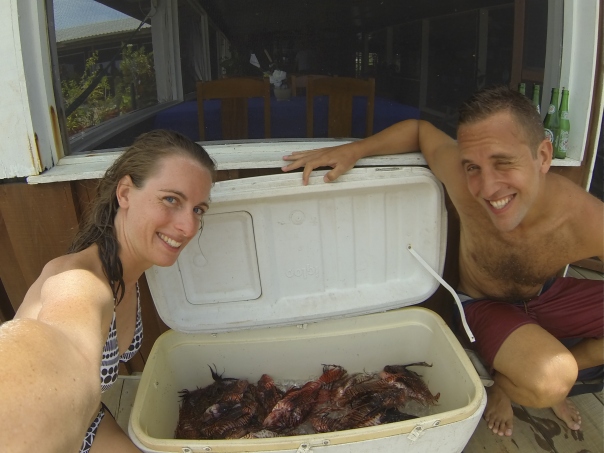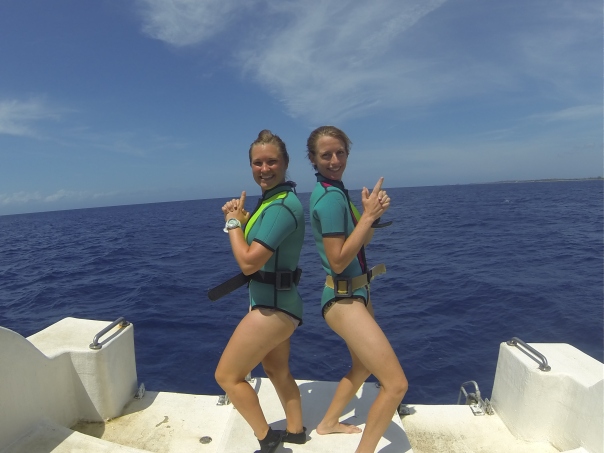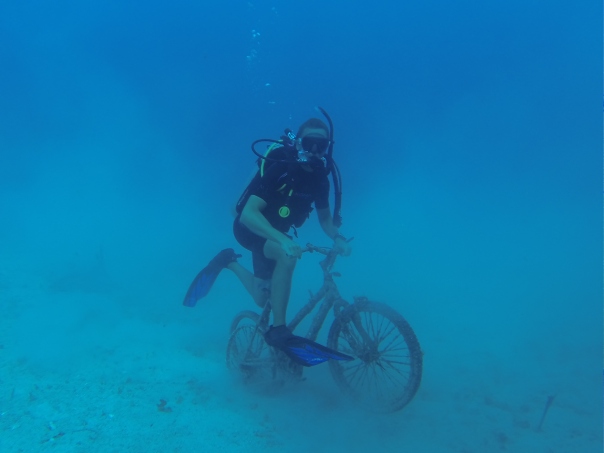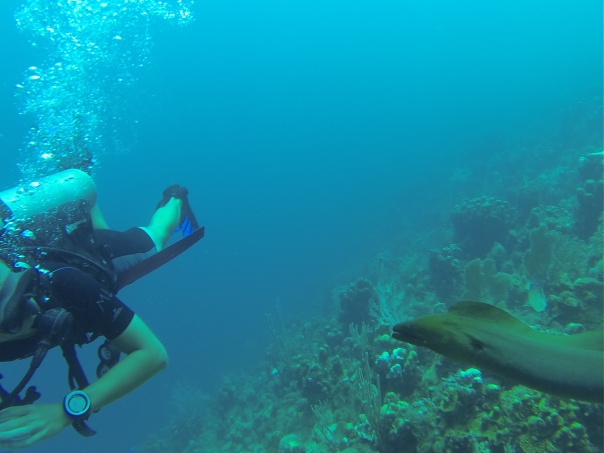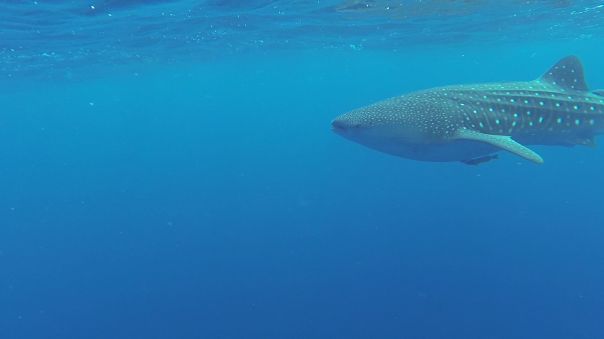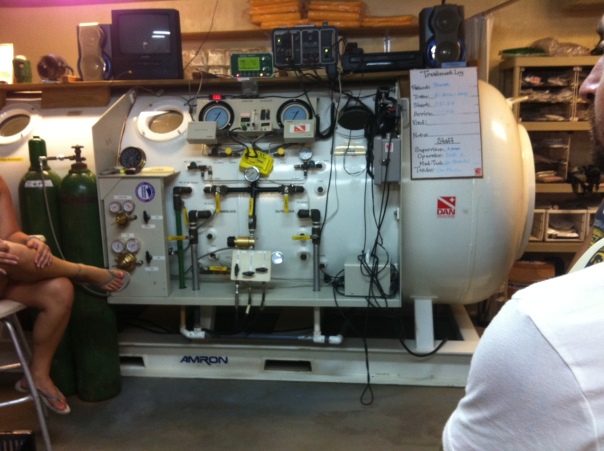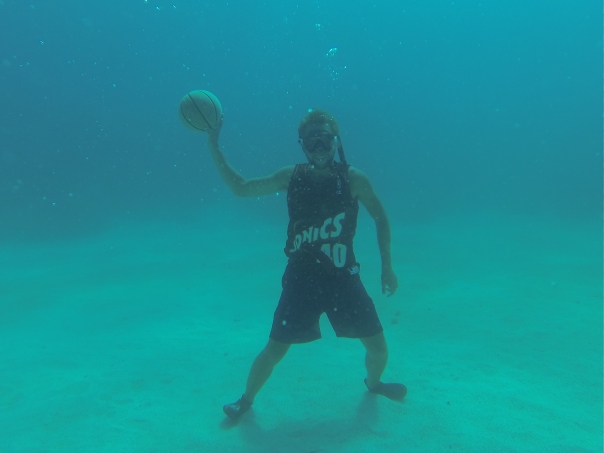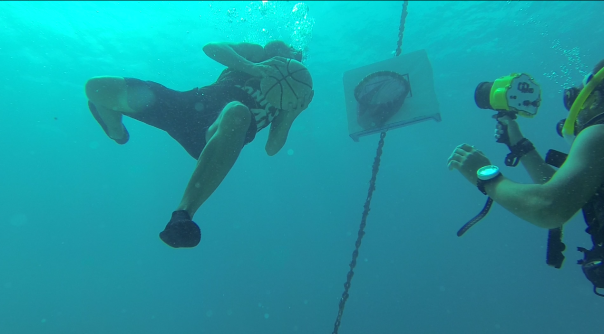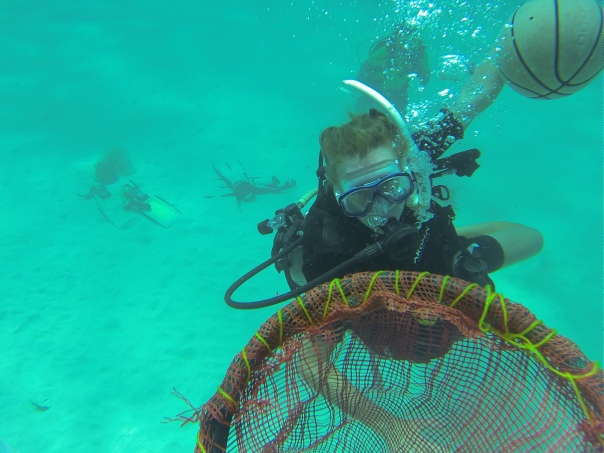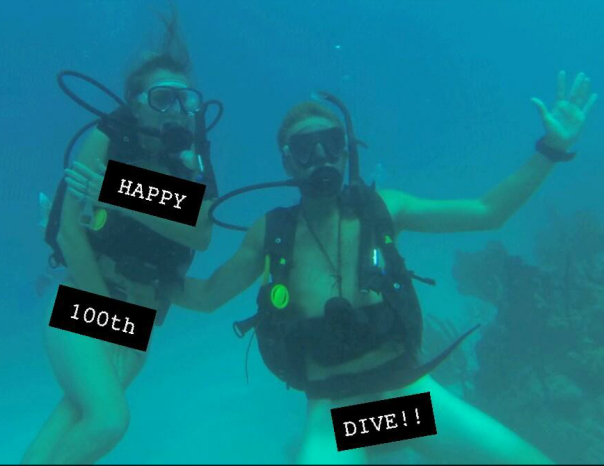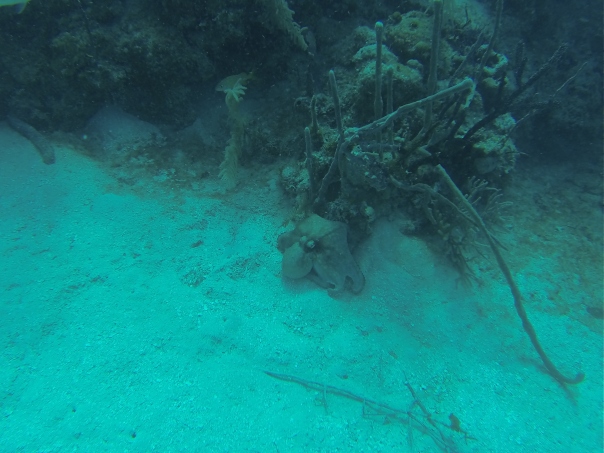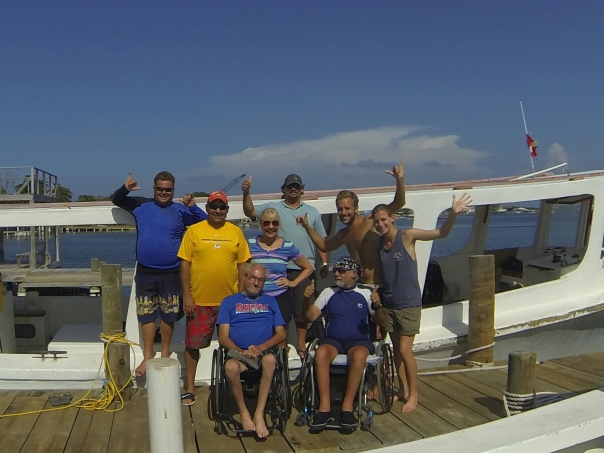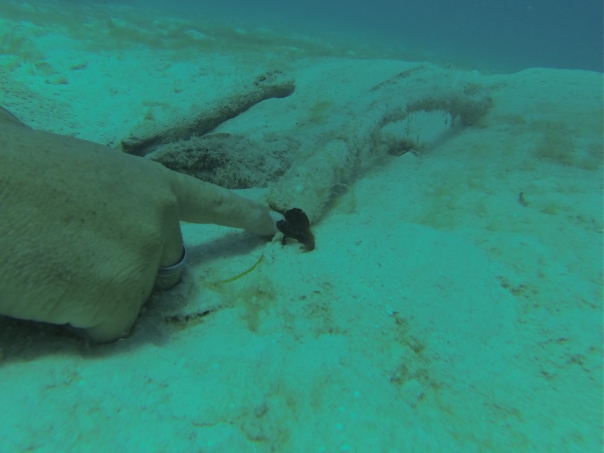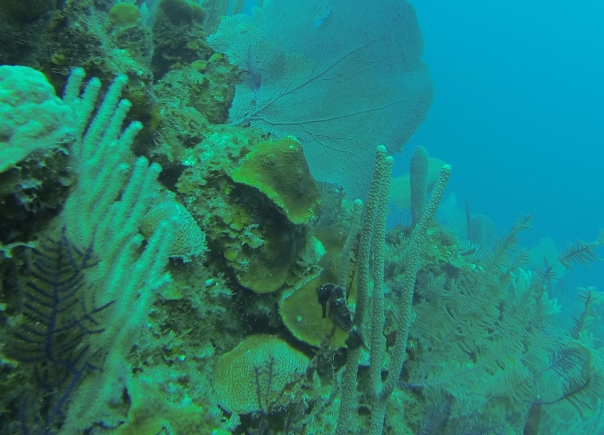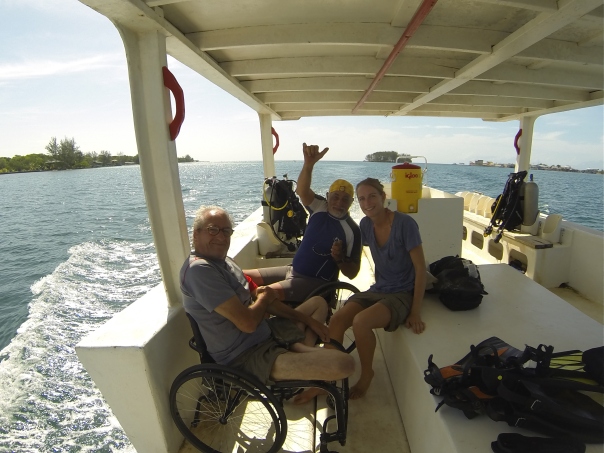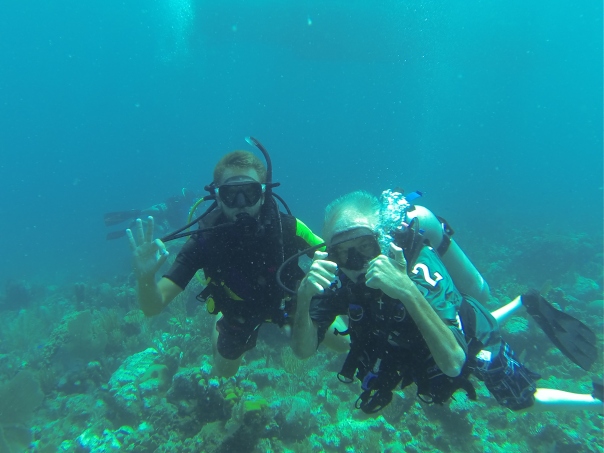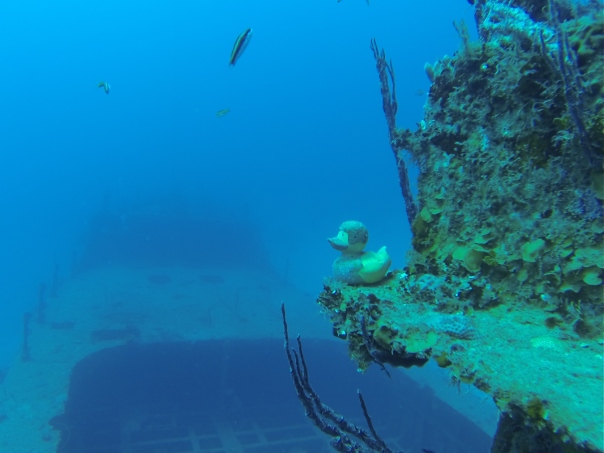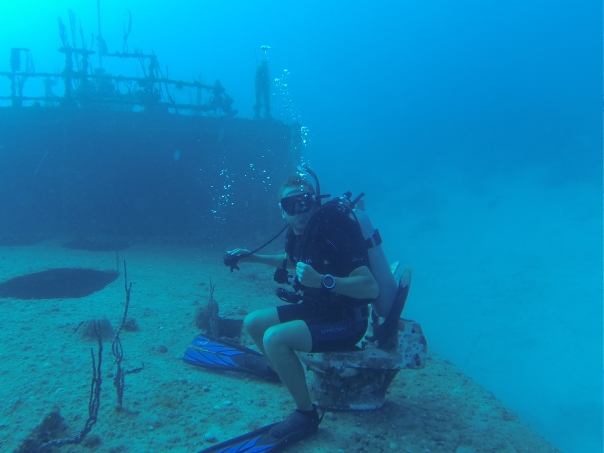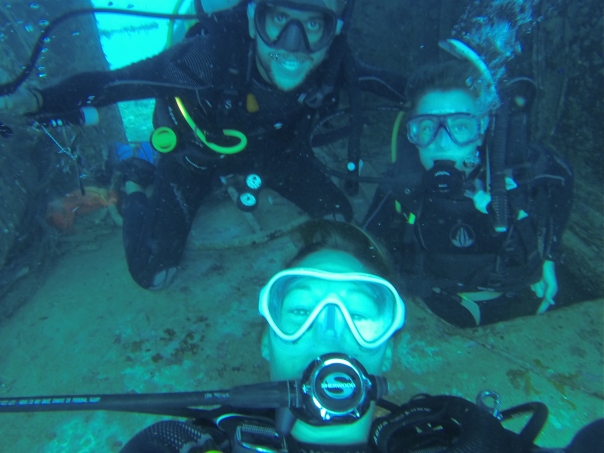Category Archives: Central America
Utila Scuba Dunks
This is just a quick one…Back in our Utila post, we told you all about the fun we had diving and coming up with the materials to play underwater basketball. Well, our mate Joel has finished his editing work and come up with this awesome video!! We love it!
If you like it, you can check out his other work here: www.joelsharpe.com.
The Panamá Connection
We entered Panamá with a question: what to visit in only 2 weeks so we could get to Colombia by mid September. We had to be really selective with the destinations, so this was our plan: Bocas del Toro, visit our mexican friend Jorge in Panamá City and embark on a sailing trip that would take us to the San Blas Islands and an open ocean crossing to Cartagena, Colombia.
Bocas del Toro is an archipielago of islands at the north-east part of the country. Sal had visited them with Banksy 9 years ago and had memories of this fishermen village with dirt roads, few backpackers and great atmosphere. However, appearing on lonely planet as the top destination in Central America doesn’t help to keep the authenticity of a place, so we were surprised by concrete roads, fast food chains, overpriced hostels and lots of tourist agents selling tours. While the prospect wasn’t that good, we were lucky to meet again with Pete & Lina, an Aussie/Lithuanian couple that we had met in Guatemala a few months back.
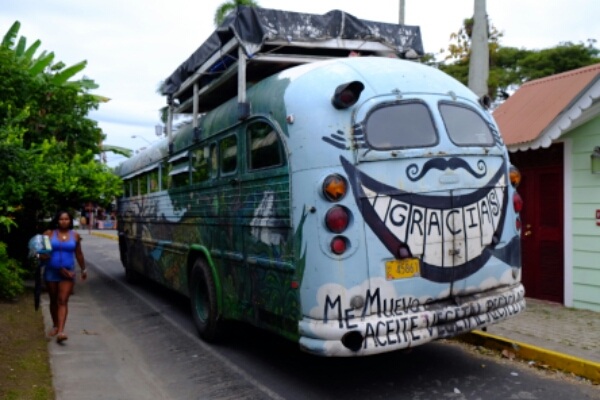
The guys travelling on this bus gave a free concert for everyone that day. We were missing live music!
We spent 3 great days with them exploring the different highlighted beaches like Bocas del Drago (aka Playa de las Estrellas) on the main island (Isla Colón) and Red Frog Beach on Isla Bastimientos, where we had to negotiate hard for a fair panga ride in order to get there.
While we were a bit disappointed by the beach standards…living in Australia doesn’t help…we had lots of fun with Sal’s favourite sports: collecting and opening drinking coconuts and spotting wildlife. The latter came in the form of the name of the last beach, a tiny, bright red frog that brought us back to the Costa Rican jungle for a few minutes. The red frog is almost extinct, so it was great to still manage to find one of them.
An overnight bus took us all the way to Panamá City, our first city after almost 6 months travelling! We were welcomed there by a huge thunderstorm, whose thunderstrikes set off nearby car alarms, and Jorge! We met Jorge 9 years ago in Vancouver and he was a great host during our 3 days in the city. His apartment had awesome views to the bay where we could see the huge cargo ships lining to enter the Panamá Canal but what we really enjoyed was his knowledge of the city, exploring it with him and remembering the good times at UBC (University of British Columbia), where Sal & I met.
We also had our dose of city luxuries, like mall shopping (don’t try to find shoes over size 10 in Central or South America!), cinema… somehow Sal & Jorge convinced me to go and see Teenage Mutant Ninja Turtles… and enjoyed some beautiful sushi for dinner!
Apart from that, Panamá’s old town is very pretty and you can breath its history through many statues and monuments to Bolívar, the military and political leader that played a key role in the freedom of Latin American countries from the Spanish empire; but also to the Panamá Canal and its promoters, which has changed the quality of life of this country over its 100 years of history.
The visit to one of the canal locks was a must and well deserves half a day to check the museum, 3D movie and watching the massive cargo ships go through the 3 stages that form the Miraflores Lock.
Out of curiosity, an average of 40 ships cross the canal every day. The cheapest vessels pay around $800 to cross, while a cargoship with 5,000 containers can pay up to $400,000! We heard that the average is around $100K, so you can figure out how much money they make every day!
Finally, we headed to Puerto Lindo, an isolated fishermen town where we met the Loic, the French captain that took us on his sailing boat from Panamá to Colombia, and the rest of our fellow sailors.
Alternatives to boating were similarly expensive flights or crossing the Darien National Park on foot, which is apparently ruled by the Colombian Guerrilla (FARC) and druglords.
Moreover, the sailing boat stopped for 3 days at the San Blas Islands, this time a really unspoilt, paradisiacal group of islands inhabited by the Kuna Indians. The Kunas are an old indigineous tribe and it’s said they are the only one that has managed to remain the rulers of their own land.
As visitors, we only had to respect some rules… like paying $1 for coconuts (their main source of income), not marrying a Kuna and not scuba diving (at $5/lobster, we imagine its their 2nd source of income).
Every morning the locals would arrive alongside our boat in their dugout canoes, with big grins showing off their lobsters, artesanal weavings or carvings. Photos of the Kuna are a contentious issue there since they saw themselves on postcards being sold in the city, so we resisted, but if you check them out on this link. The costumes and jewellery are pretty cool.
The sailing trip was a great experience, although we recommend doing it in the other direction to make the most of the currents and winds to get the sails out.
Most importantly, we made it to Colombia in time to meet with our friends, but this will be part of our next posts.
Big hugs!
Costa Rica – Wildlife Galore
Entering into Costa Rica we were faced with our first one way ticket issue…they need proof that you will leave the country to allow you in. We managed to convince the immigration official that we were meeting Nico & Diana Carolina in Colombia at the beginning of September so would be leaving for sure and as a compromise, he allowed us 15 days to pass through the country instead of the usual 90 days. It suited us fine though as it’s the most expensive country we have visited so far so we wanted to move through quickly!
So after our snap decision to try and catch the arribada (arrival on masse) of the Olive Ridley Turtles we headed straight for the town of Ostional on the Nicoya Peninsula on the Pacific Coast. It’s the site of an incredible natural phenomenon, where hundreds or even thousands of turtles arrive together to lay their eggs on about a one and a half kilometer stretch of beach. We planned to go to the beach at midnight which is when they say is the best time to go to catch the arrivals, but unfortunately there was not a single mamma turtle to be seen. Luckily however, all was not lost, because when we went to the beach in the afternoon for a stroll we came across baby turtles hatching!
Each turtle lays aprox 100 eggs in the nest, and interestingly Ostional is one of the only places in the world where the harvest of turtle eggs is legal, but only during the first few days of the arribada. Due to the huge numbers of turtles arriving to the same beach, they realised that after the first few days, the subsequent turtles were digging into previously laid nests and spoiling them anyway so they let the locals collect the first round.
After the incubation period (about 45 days) the turtles hatch and start their epic journey…it takes them about 4 days to reach the surface of the sand which is where we found them. Dogs and vultures were patrolling the beach waiting for the little ones to surface or digging them up before eating them.
We then spent the next 4 hours completely absorbed in protecting the little turtles and helping them to get safely to the water. They’re so helpless we were getting really angry with the fat dogs! Only one in 1000 hatchlings survive to adulthood, so they need as much help as they can get.

Sometimes the turtles aren’t quite ready for the run to the water, so they put them on their backs and tickle their tummies to get them exercising first
After Ostional, we headed south with a quick and uneventful stopover in San José, to Quepos to visit the Manuel Antonio National Park. It’s one of the smallest of Costa Rica’s many National Parks but also one of the most visited for its diversity.
We were a bit disappointed when we walked in to find it was very developed – almost like a wildlife theme park. The main path going in was a road for cars and many of the other paths were closed for maintenance, however it did not disappoint in terms of the wildlife we saw: monkeys, birds, lizards, raccoons and at last…we spotted some sloths!!
After seeing a very commercial National Park, we set off in search of a more wild experience in Corcovado National Park in the Osa Peninsula. According to National Geographic, Corcovado is “the most biologically intense place on Earth in terms of biodiversity”! Once in Puerto Jiménez, we met with a local guide to organise a 3 day trek into the park. We slept in a tent at the Sirena Biological Station which, after a day of hiking along beautiful beaches and through jungle, seemed just like a scene taken out of Lost!
While we didn’t see the elusive jaguars and pumas that we hoped for, we did see a tonne of other amazing wildlife while walking the trails. The highlights were seeing a tapir in the early hours of one morning, and a snake eating a small fox on the side of the path. The tapir was very shy and unfortunately we couldn’t catch it on camera, but the snake, otherwise occupied, was a great subject!
It really was wildlife galore!!
Next up we cross over to Panamá and back to the Caribbean Coast for the last time in this trip!
Nicaragua – Where the streets have no name
Learning of trip #147: the worst hangovers are cured with fried chicken. The long-day journey to León, Nicaragua, wasn’t looking that good after the great farewell party in Utila, just a couple of hours sleep and a ride on the ferry to La Ceiba; but the hearty breakfast worked marvels as we hit the roads of Honduras for 16hrs in a shuttle bus.
Nicaragua is the biggest but also poorest country in Central America. Apart from the capital, Managua, the country is also one of the safest to travel and we found their people really welcoming and honest.

Check out the man-shaped columns of the Insigne y Real Basílica Catedral de la Asunción de la Bienaventurada Virgen María! This is the biggest cathedral in Central America… and one with the longest names too!
Rubén Darío is their most relevant personality, a poet who initiated the Spanish-American literary movement known as Modernismo that flourished at the end of the 19th century. It was great to read fragments of his poems scattered across towns and their monuments. Sandino is another national hero, as he was the revolutionary leader against the US military occupancy.
Once in the beautiful colonial town of León, we realised that most of the streets in Nicaragua have no names (although U2 didn’t write their song because of this). Finding places proved tricky as addresses are just based on a landmark and then they tell you to go a number of blocks from there in a cardinal direction. Sounds simple… as long as you know where your North is!
Anyway, we couldn’t have picked a better day to get to León (15th August) as we were welcomed with La Gritería, which are the Fiestas de Asunción de María!
The local people believe that the Virgin was able to stop a volcanic eruption by praying louder than the roars from the volcano. Since then, they take images and statues of the Virgin to their windows and doors, from where they give lollies and other goodies to kids… and not-so kids.
In order to get your sweets you have to respond to the question “¿Quién trae tanta alegría?” (who brings so much joy?) with the name of the Virgin “La Asunción de María!“. It’s a beautiful tradition, with fireworks, correfocs (people running with firework boxes on), dancing giants, capgrossos (people dancing with giant head masks), processions… everyone was in a good mood.
We used León as a base for a couple of excursions. The first one to the close Pacific Coast, at the dark-sand Beach of Las Peñitas, a great spot for surfers.
The second excursion involved a long hike and camping overnight. We went to the Telica volcano with a group of 8 organised by Quetzaltrekkers, a not-for-profit organisation that donates their proceeds to improve the lives of disadvantaged kids. The hike started in San Jacinto, a little town with “hervidores” (boiling mud pits) that stunk of sulfur. Just out of the town we crossed some steam tubes connected to a local thermoelectric plant, 20% of Nicaragua’s electricity is powered by their volcanoes!
Then 4 hours, 2L of water and some live termite snacks later we were setting our tents on the secondary crater of Volcán Telica, a couple of hundred meters below the active crater.
We checked out the active crater which sounded like a roaring 747 permanently coming in to land and then hiked a bit further to a batcave for sunset. Once in darkness we went back in search of some red hot lava…the smoke coming out of the cauldron made it quite difficult to see, although we did manage to catch a few glimpses (see the red dots in the pics?).
We returned before sunrise in the hope that some of the sulphur smoke would have subsided, but no luck, although the views at sunrise were quite amazing as we could trace the volcanic range all the way to El Salvador.
From León we headed to Granada, another pretty colonial town with lots of Spanish influence as you can tell from the names.
After ticking the boxes of more churches and nice streets we took a small bus to the Pueblos Blancos, a series of little towns well known for their artisans and their proximity to the stunning Laguna de Apoyo.
We completed the loop back to Granada after visiting and having lunch at the Masaya markets. We love eating at the local markets! Not only are they inexpensive (good meals for $50cts), but they cook traditional food with fresh ingredients and they let you try it first!
However, we treat ourselves every now and then… later that night we ventured out to a TripAdvisor recommended restaurant for a Guapote dinner, much to Sal’s disappointment it was a big ugly fish to share between two. I enjoyed it a lot.
La Isla de Ometepe was our last stop in the country, the biggest island in the world in a fresh water lake, Lake Nicaragua.
The island is also topped with 2 distinctive volcanoes (Concepción and Maderas), there’s plenty of life and jaw dropping scenery and, despite being a tourist destination, it remains relatively genuine.
Our first stop was Santo Domingo, for the best of the island’s beaches. It lies right in the middle of the island where the land strip is narrow and you can see both volcanoes.
From here we also visited the natural pools Ojo de Agua, which according to legend just one dip in its waters and rejuvenates 20 years.
We spent the last 2 nights on the island in Mérida, a little town lost in the dirt road where we stayed in a Hacienda, witnessed great sunsets, tried the best Nacatamales and home-made coconut icecream and hiked to the waterfalls of San Ramón.
While the waterfalls were not really worth the 3hr walk, we spotted howler monkeys and exchanged some howls with them :)
It was precisely in the Hacienda in Mérida where we randomly picked a photography book of Costa Rica which made us change our plans. After seeing the pictures in the book, we decided to pack our stuff, skip San Juan del Sur, a busy surfer’s paradise, in order to arrive to Ostional (Costa Rica) right in time for the New Moon, the best time to witness the “arribadas” or Olive Ridley turtles arriving enmasse to lay their eggs.
We’ll let you know how it went in our next post!
Hugs for everyone!
Honduras III – Becoming Divemasters in Utila
While the land based attractions at Utila were great, our main reason to go to there lay underwater! We wanted to spend a couple of months becoming Divemasters, the first of the professional scuba dive qualifications. They told us it would be the experience of a lifetime and it certainly was!
Divemaster is the first qualification that enables you to earn money diving, guiding groups or refreshing skills. The next step in training is to become an instructor, but as tempting as it was, the investment would have shortened our trip… or tempted us to stay in Utila for good.
We spent our first day in Utila visiting and getting a feel for all the diveshops and staff. Finally we decided to go with BICD for a combination of reasons including friendly and professional staff, big boats, neat premises, quality gear and some great added extras. Needless to say, we never once regretted that decision!
The first two weeks were full-on, covering all the theory work, exams and skills sessions while still loading and unloading boats and getting in our daily fun dives. Albert, the boat captain, also taught us plenty of knots and useful things. Somehow it felt like being back at uni, but having way more fun!
In general our days went a bit like this: 5.30am breakie, prepare boat, dive, unload boat, eat, watch World Cup games and then a mix of assisting in courses, completing milestones of the divemaster program and planning other fun things to do with our friends. Most days we were sleeping like babies by 9pm.
Once we finished the theory, the exciting stuff started! John gave us a workshop on hunting Lion Fish using spears (picture us practising killing onions and bottles underwater). Now many will say it’s not fair to spearfish using scuba gear (we totally agree); however Lion Fish are an invasive species in the Caribbean. As pretty as they may be, they are reproducing and eating the local reef fish at a rate of knots! So it’s become a popular sport amongst divers and, not only were we helping the reef, but we got to have ceviche with our catch!!
We also started to assist the instructors on courses, with tasks ranging from entertaining divers in training while waiting underwater, helping them to improve their buoyancy skills, playing dead/panicked/exhausted so someone could rescue us, to calming a panicked student who wasn’t sure she wanted to continue with the course. This was something that we both found really rewarding, we learnt heaps from the instructors and had loads of fun in the process!
Diving regularly around Utila, we got used to beautiful corals, and colourful reef fish, but occasionally we were visited by some bigger creatures like dolphins and whalesharks. The biggest fish in the world, the whale shark, swims past Utila on its way to Mexico and we were really excited when we found one on the way to a dive site. We jumped in the water with snorkels and were able to catch it on camera, it was a baby, just 3 metres long…but they can grow up to 18m (think the size of a bus). It was a real thrill and hopefully it won’t be our last encounter with the magnificent creatures.
We also got to do a “dry dive” in the local hyperbaric chamber so we can be tenders (the helper on the inside) in case of a real emergency. The chamber fits three people at a time and was slowly pressurised to a “depth” of 18m at which point we got a few minutes to muck around and see what it feels like (hot, dry and our voices went helium-high).
With a bit of motivation, anything is possible on Utila, so one day after a lot talking, we decided we wanted to play basketball and make the most of reduced gravity to try crazy dunks. After a few weeks collecting a bunch of materials, planning logistics and an afternoon to put it together in the workshop we were ready to play. With a nice sandy bottom, a ball filled with fresh water and the home-made hoop hanging from the anchor chain, it was pretty awesome!! Fellow DM and talented filmmaker Joel (www.joelsharpe.com) is working on putting together a dunk compilation, so stay tuned!
As a celebration for our 100th dive, tradition says that you have to dive nude. Joel, Skye, Ana, Xavi and I reached the milestone around the same time, so we decided to make it more fun and go for a group nude-dive. We jumped in clothed (for the sake of the others on the boat) and then stripped off behind some coral, for the hilarious 30min that ensued. We were really lucky to be diving in warm waters and not to run into any other unsuspecting divers, although a big octopus caught all our attention. The pictures are censored, but we came up with a commemorative postcard for the family album.
Our 15 minutes of fame came one day when a Eduardo, a Honduran TV presenter, came out diving with us as part of the Utila episode of TuristeandoHn, a program on tourism in Honduras. http://m.youtube.com/watch?v=kDGsSnMxLpI– interview around 11:00 mins.
As we were finishing up the last requirements of the course, we were given an amazing opportunity to do a week internship at the dive resort next door. We assisted Divemaster Willie with his wonderful customers Pat & Jody and the incredible Pedro and Dave. Normally with four customers, 2 assisting DMs wouldn’t be necessary, but Dave & Pedro are both in wheelchairs so they needed some extra help under the water. Willie spotted lots of the harder to find species like frog fish and seahorses and the guys were amazing, inspiring and gave us so many laughs and excellent experience at the same time.
Finally, the last step in becoming a Divemaster is the infamous “snorkel test”. How they’re done differs from shop to shop and country to country, but ours involved donning a mask and specially adapted snorkel (complete with funnel attached to the top) and then waiting to see what lovely beverages or other items the instructors decided to inflict on us. We somewhat bravely decided to make this our last night in Utila before a 5am ferry to the mainland, and it was a night to remember.
Our time in Utila and the DM course left us with amazing memories, a great bunch of new mates and the confidence and qualifications to guide and help out other divers in and out of the water. Leaving was a really difficult decision, but there are many countries still waiting to be visited and we’ll go back there in the future for sure.
Next up, more tales to come from Nicaragua as we got back into the backpacking routine to continue our journey south.
Big hugs!
Xavi & Sal
Honduras II – Utila
After a couple of days visiting Copán Ruinas and its town, we woke up at 4am to face the most dangerous day of our trip thus far. Our goal was to make it to the island of Utila in a single day, trying our best to avoid the overnight stay in San Pedro Sula. San Pedro Sula, known for being one of the most dangerous cities on earth, is the second largest city in Honduras and a transport hub, being impossible to avoid when travelling around Honduras in public transport. Fights among cartels have raised the number of average homicides per day to 20, giving Honduras a really bad reputation. Only Arepo (Syria) has more murders per year…but they’re in the middle of a civil war!
The day couldn’t start worse, our 5am bus decided to cancel the trip because they got a better deal taking tourists to the ruins… so we had to act quickly and squeeze into a colectivo heading to the nearest town, where we were shuffled into another colectivo that took us to San Pedro Sula. The good news is that full colectivos run faster than buses and, despite the unplanned change of events, we made it to San Pedro just in time to take the bus to La Ceiba, a dodgy coastal town where the ferry to Utila departs from. The bus terminal in San Pedro felt unexpectedly safe, or as safe as you can feel with security guards carrying shotguns every 20m. and metal detectors and bag inspections conducted before entering the bus. Sorry we have no photos, but we didn’t want to show the cameras around!
10 hours after leaving Copán, we felt a great sense of accomplishment when we arrived to the ferry terminal in La Ceiba with 2 hours to spare, time that we used to watch the first game of the Soccer World Cup! We also managed to survive the ride on board of the “vomit comet” (the ferry), well known among tourists and locals alike for its choppy rides and giving nausea attacks.
Javi & Mònica, friends from Barcelona who arrived to Utila 4 years ago not knowing how to dive, are currently living there and working as instructors at Parrots Dive Centre. They received us with a beer in their hands and helped us with our first night accommodation and great advice on the diving courses. It actually took us a full day shopping around to choose a diving centre to undertake the Dive Master Program….but we will tell you all about the diving in the next post. For now, we’ll just say that Utila was our home for 2 unforgettable months and we were really, really tempted to stay there for longer. We wished we had visited this place before, who knows if we’d be working as instructors now instead of being Brand Managers!
Utila belongs to the Bay Islands, at the end of the Mesoamerican Barrier Reef, the 2nd largest in the world after the Great Barrier Reef in Australia. In brief, Utila was firstly inhabited by the Paya Indians, then Cristobal Colón did his horrible thing in the early 1500s. Spanish control was taken over by the English, Dutch and French buccaneers and pirates that dominated the Caribbean in the late 1600s; and in fact, it is said that the island featured in the Treasure Island book is 90% sure to be Utila. The famous Captain Morgan lost his booty from his raid in Panamá somewhere on the north side of Utila in 1671 and divers still keep an eye for it every time they dive.

Sal found this little surprise on her towel (hanging on the rack – how did it get there?!) one night

We were adopted by a local cat who we think was pregnant, but maybe it was just part of her plan to make us let her in and help look after her.
Nowadays, Utila is one of the cheapest places on earth to dive and is the place that certifies more divers in the world. A couple of Aussies created a hilarious youtube clip, “If you come to Utila”, that pretty much sums up everything about the island (although beware of the annoyingly catchy song). Parties are awesome and we were lucky enough to be there during the Carnival week, when we impersonated the different creatures from the sea and dominated the parade to the amusement of locals and fellow travellers.
Another drunken tradition in Utila’s life are the bar challenges, where singlets are given out as reward for completing drinking challenges. So one night after a few beers, the Guifiti challenge at the Skid Row Bar seemed like a good idea… Guifiti is a pretty feral drink made from very very cheap rum, infused with 7 different herbs, woodchips etc. The challenge included 4 shots with challenges in between each one (including 5 laps of the pool table shirtless & without touching it). Needless to say, we earnt our Skid Row t-shirts!!

Treetanic Bar – Gaudi on drugs style, and considered one of the prettiest bars in the world according to Lonely Planet.
Crazy decoration at Treetanic
We also had many on island adventures, riding out to the local freshwater caves and the highest point of the island, Pumpkin Hill, at a whopping 74m high.
The group of friends we made there was amazing and we know that we will continue in touch with many of them. We especially want to thank John, the local divemaster at BICD, for showing us around the island and all the great times we had together. John you rock and we will be waiting for you in Barcelona or Sydney, our place is yours.
Joel, Skye, Ana, Tom, Chris, Holden, John and Eli were our dive masters in training buddies and we couldn’t have found a better team to enjoy our time in Utila. It wasn’t just diving, we just spent 2 months trying to have as much fun as possible and you guys made it possible.
Step 2, secure the slippery sheet & Step 3…water + biodegradable soap!!
Finally the staff from the dive shop, Nick, Vanessa, Bec, Heather, Graeme, Fa, Chase, Pamela,Carrie, Adam, Willie, John again and the rest of the staff at the Bay Islands School of Diving (BICD); you guys make everything happen and we are extremely grateful for everything we learnt from you, such a bunch of great people and professionals!
We can’t wait to tell you about our amazing experiences during the Dive Master program but we will leave this for the 3rd and last post about Utila.
Stay tuned!
Honduras I – Copán Ruinas
From Santa Ana to get to our next destination, the Mayan ruins of Copán, the best route from El Salvador meant going back through Guatemala to get to Honduras. It was a marathon day of border crossing and bus rides! All was going really well until the 4th bus of the day dropped us off on the side of the road unable/unwilling to continue due to a road block further up the road. Turns out the locals of Jocotán were protesting against plans for a Hydroelectric Plant in the local dam by blocking the road with rocks.
After donning all the backpacks and being reassured by some locals waiting for a tuktuk it was only few kms to the border we set off. The road was lined with a queue of truck drivers on the side of the road all waiting patiently (some sleeping in hammocks under the trucks) for the road block to be cleared. An hour and lot of sweat later, we climbed in the back of a ute for a lift from the other side of the road block to the border and then the final bus to get us to Copán! Most complicated border crossing so far!!
After having already visited a few Mayan ruins in Guatemala and Belize, Copán ruins were the last on our list as we were nearing ruin saturation! However, they proved quite different from the others so it was well worth the visit.
Copán was by far the most artistic of the ruins we saw, and instead of having really huge temples like Tikal in Guatemala, its intrigue was in the quality of the carved stone sculptures (petroglyphs, stalae, statues and altars) and its ceremonial centre.
One of the key attractions of Copán is a petroglyph staircase on the side of a 30m high pyramid, made of around 1,800 individual glyphs that apparently tell the story of the 16 kings of Copán. It’s said to be the longest stone carved inscription ever found in pre-Colombian America…only when it was being put back together during excavation/restoration, without knowing the story of the kings or the Mayan language, they went with a random approach…so they’re not really sure what it was meant for. What they have been able to discover has been who the kings were and I have to give it to the Mayans, they thought of some pretty cool names for themselves: Mat Head, Moon Jaguar, Smoke Squirrel and 18 Rabbit being up there with the best!!

Petroglyph Staircase – the blocks missing on the sides were taken for display in museums around the world.
The other attraction are the stelae with the representations of the kings. They have been really well maintained and some of them still have some of the red paint used by the Mayans.
We were also lucky enough to have a chat with one of the workers in charge of the maintenance of the different ruins. His tools were a little toothbrush, a pencil and a pipe to blow air. Their main concern is the fungus that grows on the limestone, and they spend hours just to clean a few centimetres.
Copán were the last ruins we visited in Central America, where the Mayans dominated. The next ruins will most probably be the Inca jewel, Machu Picchu, in Perú… but there will be plenty of countries and stories before we get there.
Coming next, we will need a few posts to cover our 2 months diving in Utila!!
El Salvador II – Santa Ana and surroundings
Busing in and out of Salvadorian towns is a mind opening experience. The chicken buses are not as fancy as in Guatemala but, once you have managed to secure your big backpack and cosily sat or stood next to a lady who is twice your size, you realise how full of life the bus is. You can’t help but to compare the continuous buzz, animated chats and laughter with the Western, monotonously quiet, face-on-the-phone public transport. Despite the poverty level, it makes you wonder who has richer lives.
Did we say that Salvadorians are nice? Even in buses they started random conversations with us and gave us advice on things to do and visit. Driving the 500m street where the market is located took us 20min, and a minimum of 20 street vendors got on and off the bus offering from frescos (fresh juices), to fruit, icecreams, chicken & chips, chewing gum, plantain chips, nuts, toothpaste, antifungal cream, newspapers, waterproof sealants, rat poison, arthritis medicine, vitamins, socks, batteries and torches (yes, we took notes).
Salvadorian currency is the American dollar but we kept wondering what the meaning of “cora” was when they shout the prices of things (2 coras! 2 coras!). A local cleared things up for us when she explained that a cora is 25 cents, basically a spanified pronunciation of quarter.
We picked Santa Ana as our base for the next 5 days. The reason was its proximity to the Volcano Ilametepec and Lake Coatepeque we wanted to explore but also the amazing reviews of the Casa Verde hostel. We don’t normally talk about businesses on our blog but this spot is worth mentioning as it has been, by far, the best place we have stayed in the entire trip so far (considering our max $15pp budget for accommodation). The owner, Carlos, just goes out of his way to make your stay a pleasure. Free coffee beans to grind, fresh avocados from his family farm, fresh-made popcorn brought to us while we were watching a movie in the TV room or even offering us his own car for rent because the rental company didn’t have any available on the day we needed it are just some examples of his hospitality… thanks Carlos!
And finally some adventure. With travelmates Dori & Andrew, we headed to the base of Volcan Ilametepec (aka Santa Ana) where the police decides every day if the weather conditions are suitable for the hike. The cloudy sky and dense fog wasn’t inviting and we were close to take the bus back to Santa Ana…
… but we decided to risk it and stay for the police verdict… and it paid off! The walk to the top was done at a quick pace to reduce the risk of rain turning us back… but the police guys confesed that it was their favourite way to stay fit as well. When we got to the top the sky cleared up and the impressive views of the turquoise boiling waters appeared from the bottom of the crater.
At 2,387m. it’s not the highest volcano we’ve hiked but definitely one of the prettiest. Its last eruption took place in 2005, making the crater sink deeper and, with a circumference of 2km, the echo was lots of fun to play with, it kept bouncing around and around.
The day ended up being so clear that we could also see the Coatepeque lake!
Back to Santa Ana, a catalan girl told us about a free concert (es gratis, no?) at the national theatre. Carlos gave us a lift there to make sure we got a spot, and we enjoyed 4 pieces from this German string quartet. So there you go, a classical music concert every few hikes is not bad!
After a day resting at the hostel, we took Carlos’ car with Dori and headed for a daytrip to Suchitoto, a charming colonial town north east of San Salvador where locals spend their weekends.
This town was the only one that wasn’t devastated during the civil war because both sides agreed that it was worth saving. We visited the market, found the local cornflour mill, we ate more pupusas and wandered the streets.
5kms down the road there’s the Embalse Cerro Grande, a pretty, green landscape where Suchitoto locals escape to when the people from the city visit their town.
After lunch we headed to Santa Tecla, a popular suburb in the outskirts of San Salvador with a pedestrian avenue packed with food stalls and artisanal markets. We felt really lucky to see these couple of local destinations in a single day (it wouldn’t have been possible without a car), and driving around and finding our way with screenshots from google maps was just fun.
When we couldn’t justify more time to be spent at casa verde we decided to pack and head towards Honduras with Dori, our travel buddy in El Salvador. Ahead of us was a double border crossing (back through Guatemala to enter Honduras) in order to get to Copan Ruinas, the last Mayan ruins to be visited in our trip.
We’ll tell you all about it in our next post!
El Salvador I – Ruta de los Flores
El Salvador was another unexpected addition to our itinerary until we heard some glowing reports from other travellers and friends (thanks Janis & Florian! – www.blog.michellod.de). It’s the country home to the infamous gangs “Las Maras” and like in Guatemala, the first half of the newspaper seems to be full of reports about recent murders and gun fights etc which had us a little worried. However, true to what we heard from other travellers, it really is a beautiful place and more than anywhere we’ve been so far the people were welcoming, friendly and would go out of their way to help us.
Our first destination in El Salvador was La Ruta de Los Flores (the Flower Route) and in particular a little town called, Juayúa, which is famous for its weekend food fairs. The central square transforms every weekend with food and drinks stalls, a throng of people and entertainment in the form of a Latino singer.
We sampled a variety of interesting local cuisine including grilled frog, beef fajitas, nuegados (fried cassava in syrup), horchata that tasted like peanuts and chicha, a local alcoholic drink made of fermented rice and fruits.
Xavi made some local friends at a bar and after chatting with them for a while about local traditions, wanted to shout them a round of the local shot (chaparrón, made of fermented corn). The bar had run out and, imagine how nice they are, one of them went to his house in the rain just to get his bottle for us to try!
The following day we headed out to the local waterfalls for a sort of abseiling / swimming trip. As we walked trough coffee plantations, the guide, Carlos, explained details of work on the coffee fincas, $4/100Lb for collecting (2 sacks max per day) and $56 in 2-3 weeks for pruning the wind blocking trees – tough and dangerous work!! He also encouraged us to try guamita (or paterna) beans from the tree, a perfect snack for the road.
The best part was the waterfall at the end, Los Chorros de la Calera, where we had a swim and then also walked/swam through some tunnels that connected through the rocks to another waterfall. Inside it was pitch black, with little room to breath and a slight current in the water pushing us to the other side (you wouldn’t want to be claustrophobic!).
Here we were also introduced to the El Salvadorean specialty, pupusas, which are a corn tortilla pocket filled with all sorts of interesting fillings although the basic ones are usually pork crackling and cheese or beans. We made a point of trying as many places as possible and our final verdict for the tastiest went with Doña Cony’s! (el nom en català no sona tan recomanable!), Mrs Cony even allowed us to get our hands dirty and prepare a couple of pupusas ourselves.
The next stop on the Ruta de Los Flores was Concepción de Ataco, a quiet little town with very colourful wall murals. The murals all have a social content, promoting the values and culture of the town, children’s rights, environmental conservation, gender equity etc.

A sight we’ve seen in many small Central American towns…drunks passed out on the footpath in the middle of the day (usually pay day)…it’s a shame alcohol is so cheap
Our last stop on la Ruta de Los Flores was Tacuba to visit El Parque Nacional el Impossible (The Impossible National Park) named due to the treacherous nature of crossing it (many donkeys and villagers fell to their deaths in a gorge!). However luckily for us, the government made the impossible possible by building some roads to make it accessible.
We ventured into the national park on a tour to Las Siete Cascadas, starting at a point about 40mins by 4WD from Tacuba. To get to the river, we walked along very thin trails cut by machete, passing armadillo holes and trees with the guam seed pods (or guamita). Once at the first jump point, the guide tossed a rock into the water to show us where to jump and then the fun began. One was particularly scary because he told us to jump out and then bend the knees upon entering the water because it wasn’t so deep (loving the safety standards of Central America!!)! He then walked down the edge of the slope and didn’t jump…
We stopped for lunch in a beautiful spot at the top of the highest jump. Some farmers still have coffee and corn fields in the National Park, the government tried to buy it back to extend the park but some didn’t accept so they are allowed to stay on the condition they don’t cut back too many trees (or more than necessary) – still they look like big bare scars on the side of a beautiful green mountain! It’s a very steep & dangerous place to be sowing corn but apparently it delivers the best corn due to the fertility of the soil.
We continued our quest for the best pupusas here too and while they didn’t beat Doña Cony’s, we did get entertainment from next door, an evangelical church with loud karaoke style bad singing into microphones!! We also made an excellent discovery at the local bakery…Budin!! Essentially a bread and butter pudding – it was amazing!! So good, it got our return business the next day to stock up for the bus ride to Santa Ana!!
It’s been a week since the last volcano climb, so time for another one!
Hope all is well with everyone, sending big hugs your way!
Guatemala VII – Antigua
Antigua is a really cool town recognised by the UNESCO as World Heritage… somehow similar to the colonial style Trinidad in Cuba, its cobblestone streets, spectacular churches in ruins and colourful facades took us back in time for almost an entire week. Ok, and the nice restaurants offering a few more choices other than rice and beans!
Our favourite eatery, La Tienda Canche, was a kitchen+living room decorated with photos of the past 4 Popes hidden behind a tiny grocery store, where 3 old and lovely ladies prepared traditional dishes accompanied by Roco, a talking parrot.
Antigua used to be the capital city, but a volcano eruption back in 1773 destroyed much of the town and forced the government to move it to the current Guatemala City. Nowadays, Antigua is a really safe tourist mecca and another great place to learn Spanish and climb volcanoes, and it employs thousands of Guatemalans.
Rumors say that Antigua is also a massive money laundry for druglords and, while we’re against drugs, it makes you think how would the place look like and how would the quality of live be if this wasn’t the situation. Paradoxically, as we witnessed back in Rio Dulce, seems like the drug dealing business is more interested in the safety, employment and well-being of Guatemalans and tourists than its own government.
On arrival, the bus station next to the local market didn’t fail to impress us yet again…although this time, the colonial architecture and the volcanoes surrounding the town (Agua, Fuego and Acatenango), were the main attraction.
After wandering the streets for a couple of days, I ventured out on a mountain bike day with Mike and Carlos, a local guy running one of the hotels in Antigua. 3 factors made this day the most strenuous of this trip so far. First, mountain biking in Guatemala means going up non-stop for hours, tracks weren’t built to make it nice and gentle for bikers but to get to the top as fast and steep as possible. Second, Carlos is a triathlon runner and MTB champion. Third, Mike being Irish and myself Catalan, meant making the most of the money we had paid to rent the bikes so, after 48kms in the morning, we went for another 16 in the afternoon. Sal & Ana picked us up at the end of the day, fed us something and I was in bed sleeping like a baby by 7pm.
After our disappointing volcano experience in Xela, we headed to volcan Pacaya with Mike and Ana and yes, we were luckier this time! Its last eruption, back in March left some hot lava behind that we used to roast mashmellows.
We were quite worried about melting the soles of our boots to be honest! For those in Australia, Hamish & Andy had more resources than us and recorded a show there in their Latin America gap year where they baked a lasagna on the lava.
Speaking of lava, the lava store, located almost at the top of the volcano is a project giving back to the community affected by an eruption in 2007 that devastated an entire town.
The affected families sell necklaces, bracelets, etc made of polished coco shell and lava inserts in the shape of Mayan symbols, from the very volcano that destroyed their homes. We also came to learn that Sal and I share the same Mayan zodiacal symbol, the Imox, which is some sort of crocodile.
Our final days in Guatemala were spent recovering energies, enjoying the company of our travel buddies and trying local dishes. We couldn’t believe our passports when we realised that we had spent a full month in the country! Guatemala, El Salvador, Honduras and Nicaragua form the C4, an agreement that, among other things, allow visitors to stay in the 4 countries for a combined period of 90 days… so we only had 60 days left to visit the 3 remaining countries.
Coming next, El Salvador!, an unplanned visit that was well worth the change in our plans. Until then, big hugs for everyone!


